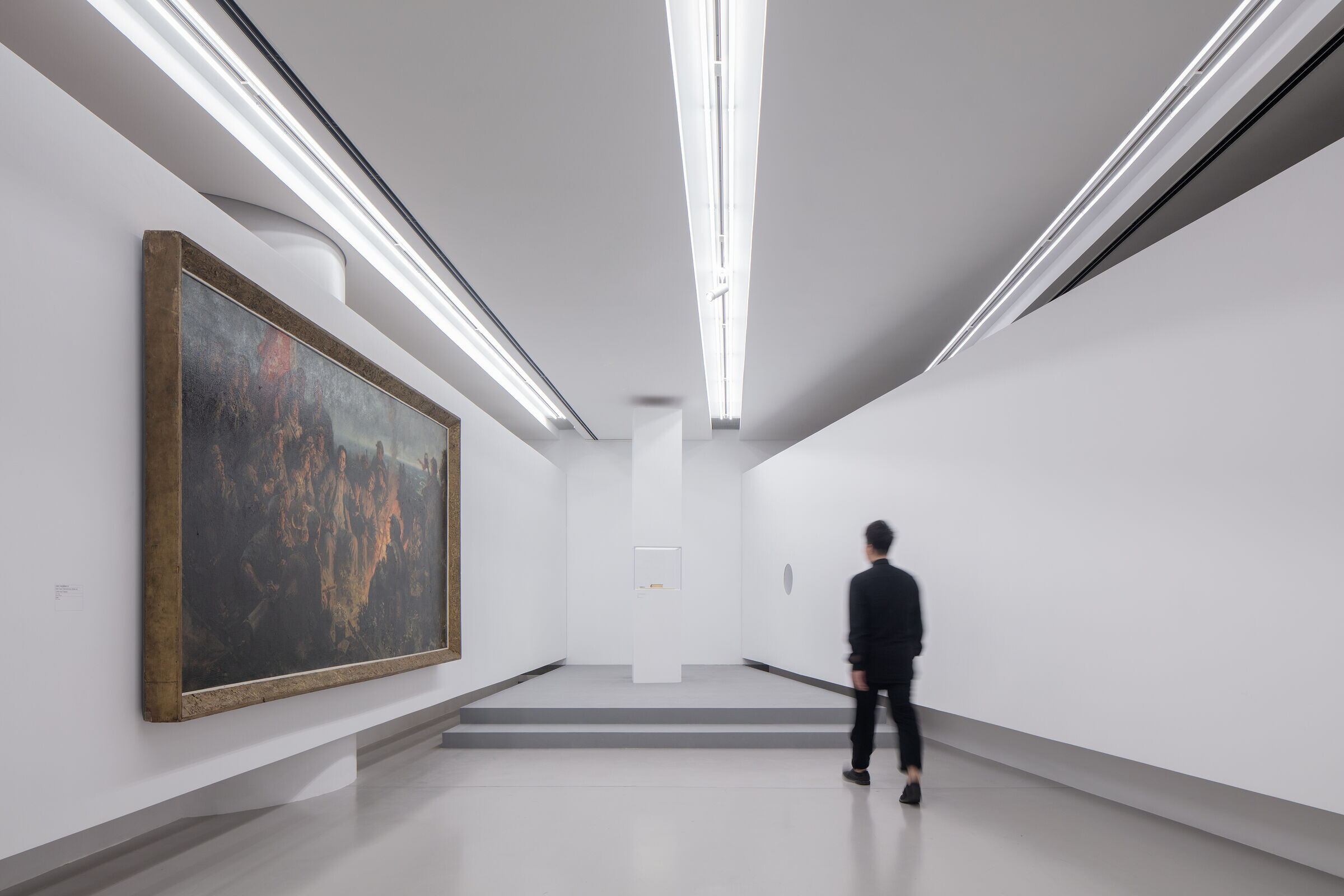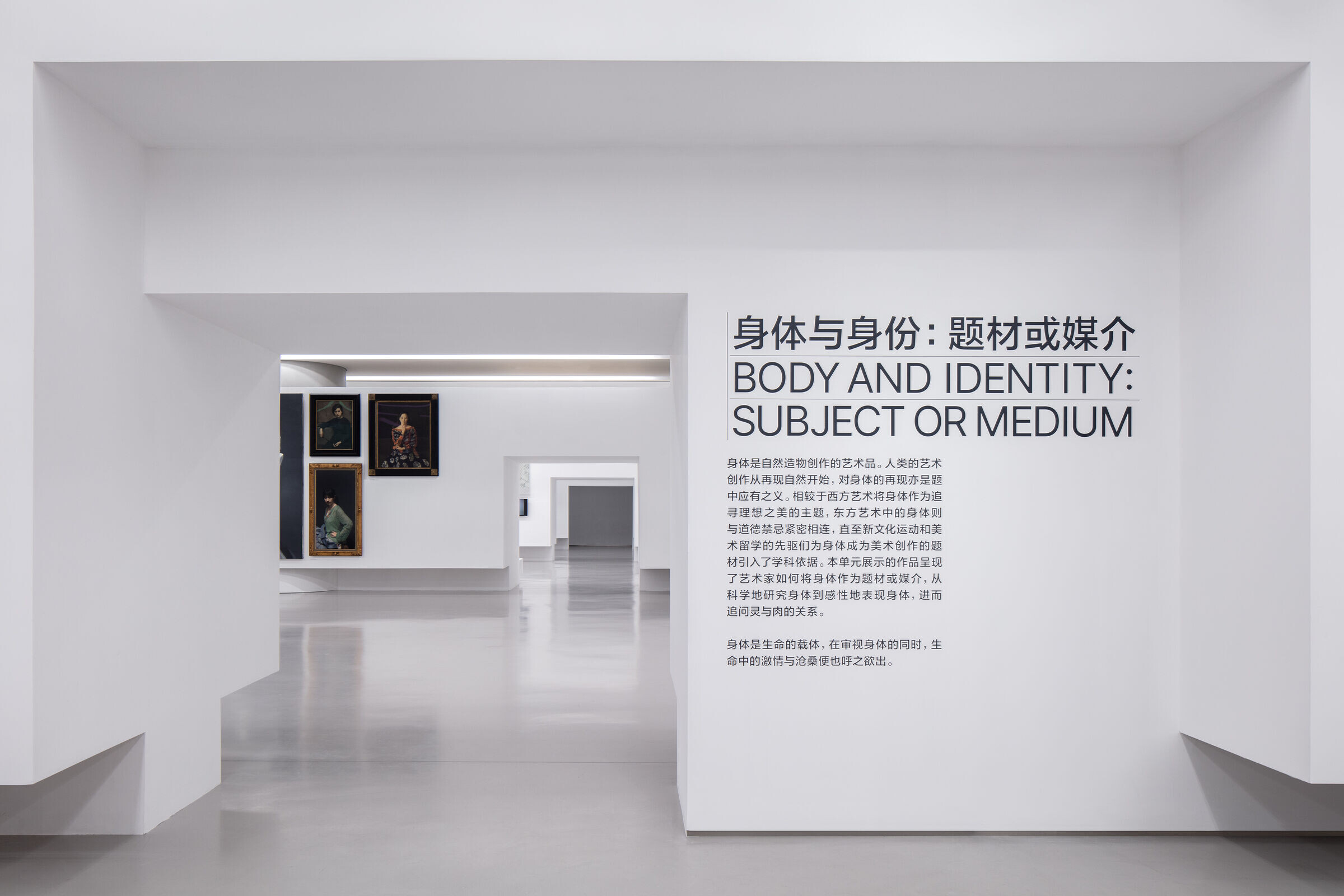In the spring of 2023, CPLUS was commissioned by Taikang Art Museum (TAM) to design the exhibition space for its inaugural exhibition “Engaging with the World: Modern and Contemporary Chinese Art Since the Dawn of the 20th Century”. Taikang Art Museum is located in the core area of Beijing Guomao CBD, adjacent to several supertall buildings such as CITIC Tower (also known as “China Zun”). The overall exhibition space consists of two floors, covering an area of approximately 2000 square meters.

According to the site conditions and exhibition requirements, the exhibition entrance is set up on the second floor of the east podium of Taikang Group Building, which is relatively independent and can be reached directly by elevator. The exit is located on the first floor, next to the Taikang lobby where several masterpieces of the final unit are exhibited, and they are connected by a temporary passage.

Space Reconstruction
Due to the existence of many columns and corner spaces in the original site, the architects discovered that the irregular boundaries and twisting circulation lines unexpectedly brought fun of visiting the garden, so they used these as clues to reconstruct the exhibition space.

The exhibition wall is based on the idea of the “Great Stone”. As an additional structure, it not only provides a neutral background for the paintings, but also implants a courtyard-style exhibition space sequence inside the art museum, making the single space rich and orderly. At the same time, the resulting display interface also brings more possibilities for diverse exhibitions.

The exhibition walls employ diverse forms in response to different vertical conditions of the site. The second floor is relatively low in height, so the walls are arranged in a curved or diagonal shape to create an interesting exhibition space. While the ground floor features high ceilings, regular walls are used to emphasize an open and dignified atmosphere.

The intentionally thickened wall is like the huge stone covered with petroglyphs in the primitive cave, which eliminates the interference of the pillars on the exhibition hall. The indented design at the bottom makes it float on the ground, and the top is separated from the original ceiling, which reduces the impact of the exhibition on the original interface of the museum and breaks the dullness.

Scenario Migration
The courtyards divided by the "Great Stone" exhibition walls accommodate different exhibition theme units, connected in series by a migratory line, alternating with dramatic changes in spatial rhythm from cramped to open. The expressions of specific places change with different works, inviting spectators into a narrative of a garden tour with different scenes.

The architects designed different shapes of openings in various walls, which are similar to the windows and doorways in classical gardens.
The round window in the preface hall on the second floor reveals the book of “Das Kapital” (1867), which is a metaphor for the spirit of the times and attracts visitors to start visiting. The long window opening embedded in the curved wall at the corner of the “Unit 3” exhibition hall naturally extends people's sight to the outer passage, implying the following routes. When walking to the passage, people look back towards the inner side through the same hole, obtaining the perspective conversion between light and dark, inside and outside. Moving to the first floor, the exhibition wall that separates the “Unit 8” and “Unit 9” exhibition halls is reduced in volume by a large stepped window. The contrast between void and solid and the staggered levels enrich one's experiences of the space and paintings. The array of multiple door openings generates progressive visual depth, guiding the viewers to continue moving and perceive the progressive spatial sequence in a traditional courtyard.

In addition, the architects also developed two different viewing experiences for visitors, dynamic and static. On the wall where the works densely hanging on, surrounding a circle of blank space, forms a giant frame. A bench on the opposite side allows visitors to pause, sit down and appreciate the scenes slowly. In the units where the works are scattered, people need to move in an orderly manner to view the exhibition, and the paintings unfold in front of their eyes like a long scroll.



























